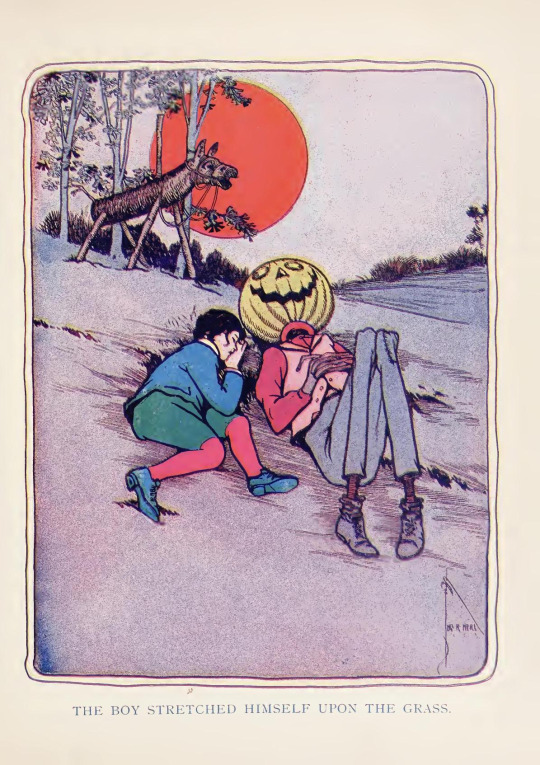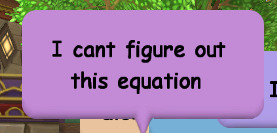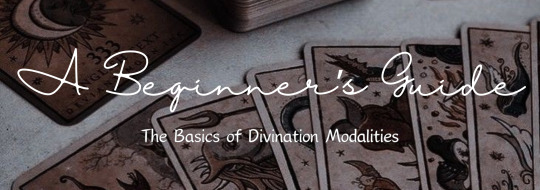#queue tip
Explore tagged Tumblr posts
Text





qian beauty just launched !
#ts4#s#*soju save#*chu hua gen#bitches be like “im behind on my queue !” “with the side quest!!!”#the way this is only the tip of the iceberg of what is planned for this sorry yall brainrot set in
2K notes
·
View notes
Text
(it thinks this deserves its own post, was a response in this thread)
setting up tasks that can't be won gets old fast for obedient subs. we want to be obedient. we want to be good. if you suddenly switch up the dynamics to make us fail, you're pulling the rug out from under us. complaints about unfairness would be warranted, and it will damage the trust we have in you if you pull this too often. we'll go from wanting to obedient to giving up trying, because you clearly don't care if we're good if you make it so we can't be. you might get shock, but we'll also feel betrayed.
if you want to punish us arbitrarily, make it a challenge! tell us you want us to take a punishment, you want to see how well we can handle it. put our pride as an obedient sub on the line. treat punishment as a task we can complete rather than a punishment.
you could even make it the reward for success! don't treat us like we're boring for always being good, but make the play you want to have the reward for completing our tasks properly. treat punishments as a treat and attention we get as a reward for being good.
you can even punish us to show us what will happen if we fail! a preemptive warning against being disobedient. maintenance spankings, difficult bondage time, things that underline that we are subservient to you. punished to make the point that you are in charge, not arbitrarily or random, but routinely as a message.
we won't change and won't stop wanting to be obedient. but treating that as anything other than a gift we are giving you is doing us a disservice and you don't deserve it if you can't appreciate it.
381 notes
·
View notes
Text
The lore of #asking for shark est to return to the sea trending worldwide --
So, William and Est are on a vacation in Phuket, getting a much deserved break and they had been sharing pictures and videos from the holiday. And normally when Est is on a vacation near sea, we get plenty of pictures of him in his "natural habitat".


However, William has been quite vocal about feeling possessive whenever Est posts shirtless pics. He had teased Est about it in their "My Ideal Fan" video.



Est also talked about how people are forgetting that he used to be a swimmer and that earlier he used to wear shirts with just two buttons buttoned up but now he wears t-shirts and does not show off anymore. He even posted his baby tee challenge on tiktok with the caption "(my) baby is possessive".
So, earlier this morning, William posted this picture where you could get only a glimpse of shirtless Est.

This prompted fans to start trending the hashtag asking Est to return to his natural habitat (i.e., indirectly asking William to let Est post shirtless pics). People basically started tweeting the hashtag with Est's previous shirtless vacation photos and asking for more.
William noticed the hashtag and tweeted this which encouraged Est to ask everyone to keep voicing out their opinion -

(william's tweet || est's tweet || translation)
It trended #1 in Thailand and #5 Worldwide (while trending in 6 countries) with over a 110k tweets. P'Mui (screenwriter and director of ThamePo), Parbdee (the production company that worked on ThamePo), ICONSIAM, various news outlets, etc. also joined in -




(translation 1 || translation 2 || translation 3 || icon siam's tweet)
It ended with Est finally posting his picture (after making a deal with William).


To which William replied -

#williamest#william jakrapatr#est supha#thamepo#thame po#thamepo heart that skips a beat#what a wild wild day#this is just the tip of the iceberg#this thing is far from over because est said he has added some posts in queue#but it's late here and i'm gonna go sleep now#will update this later if they do something unhinged again#postsbyrain
271 notes
·
View notes
Text

IM FREE FROM VACATION!! I can finally post things again, its a miracle.
Redraw of this

#I was at my grandmas and the internet was too poor to let me post anything. I drew some BANGERS too#I dont like posting too much at once so they're going in the queue#I drew this as a style study and also because Im obsessed with this specific picture. Its so sweet yet deeply unnatural and ominous#wizard of oz#the wizard of oz#oz books#the marvelous land of oz#wicked musical#wicked movie#oz tip#Tippetarius#jack pumpkinhead#princess ozma#ozma#The Wicked Land Of Oz au#redraw#art#fanart#digital art#This was also drawn for my fic one day you will be real...#im thinking about maybe having art for each chapter I think itd be a cute nod to the books
261 notes
·
View notes
Text








#criminal minds#aaron hotchner#investing in a queue#1x16 i love u tip touching ep.#user solardrops i hope u know i call this the tip touching ep bc of u. just stuck in my mind forever.#this ep is like catnip to robin hotchologys#age gap sibling issues. daddy issues in there too fuck it. gay hotch. bitch hotch. pulling stupid faces every 2 seconds.#biting.
204 notes
·
View notes
Text

I got some messages that asked me to explain a bit more about scrying, and I wanted to make a separate post to clarify this method of divination from my main post on commonly used divination methods. So, let's dive in!
Scrying is a form of divination that involves gazing into a reflective surface or medium to receive insights, visions, or messages from the spiritual realm. It's a practice that has been used by various cultures and civilizations throughout history, dating back to ancient times.
1. Cultural and Historical Significance: Scrying has been practiced by cultures around the world for thousands of years. It has roots in ancient civilizations such as Egypt, Greece, Rome, and China, where it was used for divination, spiritual guidance, and accessing hidden knowledge.
2. Psychic Abilities: Some practitioners believe that scrying can help enhance psychic abilities such as clairvoyance (seeing visions), clairaudience (hearing messages), and clairsentience (feeling energies). By quieting the mind and opening oneself to the messages of the spiritual realm, practitioners may strengthen their intuitive faculties.
3. Modern Applications: While scrying has ancient origins, it continues to be practiced today by witches, psychics, and spiritual seekers around the world. Modern practitioners may incorporate scrying into their magical or spiritual practices, using it as a tool for guidance, insight, and personal growth.
⠈⠂⠄⠄⠂⠁⠁⠂⠄⠄⠂⠁⠁⠂⠄⠄⠂⠁⠁⠂⠄⠄⠂⠁⠁⠂⠄⠄⠂⠁⠁⠂⠄⠄⠂⠁⠁⠂⠄⠄⠂
Here are some key aspects of the practice of scrying:
⦿ Tools: Scrying can be performed using a variety of tools, including: -> Crystal balls: Smooth, polished spheres made of crystal or glass. -> Black mirrors: Mirrors with a dark, reflective surface, often made of obsidian or other black stones. -> Bowls of water: Still water in a dark-colored or reflective bowl.- Flame: Gazing into the flame of a candle or fire. ⦿ Preparation: Before scrying, it's important to prepare yourself and your space. This may involve cleansing and consecrating your scrying tool, setting a sacred space for your practice, and quieting your mind through meditation or relaxation techniques. ⦿ Technique: To scry, you fix your gaze on the surface of the scrying tool while allowing your mind to relax and enter a receptive state. You may begin to see images, symbols, or visions appear in the reflective surface. It's important to maintain a soft focus and an open mind, allowing the messages to come through naturally. ⦿ Interpretation: After a scrying session, it's helpful to journal your experiences and interpretations. Pay attention to any symbols, images, or feelings that came up during the session and reflect on their significance. Trust your intuition and the guidance you receive from the spiritual realm. ⦿ Types of Scrying: While the most common form of scrying involves gazing into a reflective surface, there are other variations of the practice as well. This includes water scrying (gazing into bodies of water), fire scrying (gazing into flames), and even scrying using smoke or clouds. ⦿ Uses: Scrying can be used for various purposes, including divination, receiving guidance or insights, connecting with spirit guides or ancestors, and accessing subconscious or hidden knowledge. It can also be used as a tool for personal and spiritual growth, meditation, and self-reflection.
4. Ethical Considerations: Like any form of divination, it's important for practitioners to approach scrying with respect, integrity, and ethical awareness. Practitioners should be mindful of the potential impact of their readings on themselves and others and strive to use their abilities responsibly and ethically.
5. Experimentation and Exploration: Scrying is a deeply personal practice, and there is no one "right" way to do it. Practitioners are encouraged to experiment with different scrying tools, techniques, and environments to find what works best for them. Trusting one's intuition and inner guidance is key to successful scrying.
Overall, scrying is a versatile and powerful practice that allows practitioners to tap into their intuition, connect with the spiritual realm, and gain valuable insights and guidance. It’s a deeply personal and intuitive practice that can be adapted and customized to suit individual preferences and needs.
Regular practice, combined with an open mind and heart, can lead to deeper insights, clearer visions, and a stronger intuitive connection with the spiritual realm. Additionally, seeking guidance from experienced practitioners, studying relevant literature, and participating in supportive communities can offer valuable support and encouragement on the scrying journey.
This is not a tool I regularly use, simply because of my headaches. Either it’s the mundane tapping into your head saying, “Hey, knock it off, you don’t need to do this.” or it’s the magical side saying “Hey, you have better places to put your time and energy. this is not one of them.” So if you are interested in this practice by all means utilize it to the best of your ability, but if you can’t seem to focus or get really bad headaches all the time, this may not be the BEST practice for you. It is an option, though! just be careful, witchlings!
Remember to approach scrying with a sense of curiosity, wonder, and reverence for the mysteries of the universe. Trust in your own intuition and the guidance you receive, and allow the magic of scrying to unfold in its own time. With dedication and perseverance, the practice of scrying can become a profound and transformative tool for spiritual growth and enlightenment.

⠈⠂⠄⠄⠂⠁⠁⠂⠄⠄⠂⠁⠁⠂⠄⠄⠂⠁⠁⠂⠄⠄⠂⠁⠁⠂⠄⠄⠂⠁⠁⠂⠄⠄⠂⠁⠁⠂⠄⠄⠂
Learn more: How to Scry Candle Wax in Water Tarot, Pendulums, Scrying, and More! Ways to Improve Psychic Gifts + Removing Mental Blockages Using A Witch's Mirror: Scrying, Automatic Writing, Spirit Work
#queue the magick#witchcraft#witch#witchblr#reference#magickkate#kitchen witch#sigils#green witch#witchy#modern witchcraft#witch aesthetic#witch community#baby witch#weather witch#cosmic witch#sea witch#witches#witchcore#baby witch tips#witchy vibes#beginner witch#witch blog#witch tips#scrying#divination#types of divination#scrying mirror
773 notes
·
View notes
Text
How to Write an Image Description: A Fundamental Guide.
[Plain Text: How to Write an Image Description: A Fundamental Guide. End PT]
General Guidelines:
[PT: General Guidelines. End PT]
Object, Action, Context
[PT: Object, action, context. End PT]
This is what you want to prioritize. What are we looking at, what is going on, and what is the surrounding environment?
Keep it simple and get to the point
[PT: Keep it simple and get to the point.]
Try to use short, clear sentences and prioritize what the reader needs to know in the context of the post. We don't need to know that the tweet was posted at 2:08AM or what color rings someone is wearing. That doesn't really provide useful information. If you really want to provide some relevant details, be sure you get to the main point of the image first.
Context is Important
[PT: Context is Important. End PT]
Why is the image posted there? What information does it lend to the content around it? Make sure the viewer knows what they need to know to understand how the image relates to the text and content partnered with it.
For a meme or a tweet screenshot, we don't need to know all the details or what the background looks like, we just need to understand the joke. For something like art or photography, you may want to include more details.
Don't Assume
[PT: Don't Assume. End PT]
Don't assume gender, race, and pronouns of the subject(s) of the image. If you can find this context in the post, on op's blog, or somewhere else you can include it, but try not to make baseless assumptions.
Alt Text vs Image Descriptions
[PT: Alt Text vs Image Descriptions. End PT]
Alt text is great for people using screen readers, but it isn't always the most accessible option. Alt text can be glitchy, the font size cannot be changed for those who need large text, and it doesn't show up at all until the image either loads or completely fails to load.
For this reason, a longer description in plain text in the body of the post is a more accessible option.
I suggest a short summary in the alt text so people can get the overview of an image and a longer description in the body of the post. For example, compare the image description and the alt text for the following image:

[Image ID: A guide to writing alt text on images. At the top, it says "Writing Alt Text" in big white text. It then lists off five major steps to writing alt text. Identify who, expression, description, color, and interesting features. It then shows an image of a capybara, with a sample alt text that reads, "A capybara looking relaxed in a hot spa. Yellow yuzu fruits are floating in the water, and one is balanced on top of the capybara's head." with each block of text color-coordinated to show which of the five steps it corresponds to. At the bottom of the image is the word "Puzzle" stylized into a logo. End ID.]
The Alt text provides the bare minimum of what you need to know to contextualize the image, while the ID expands on details that help to understand it and provides more details.
Formatting:
[PT: Formatting. End PT]
Try your best to use correct spelling and grammar, but transcribe accurately. Use clear language and concise sentences where possible. However: Don't censor words or correct spelling when transcribing something from the image. You want the description to be as accurate to the image as possible.
[PT: use correct spelling and grammar, but transcribe accurately. End PT]
Always use plain text. Never use formatting like bold, italics, other fonts/font sizes/text colors, or text in all caps. If they appear in the original image, transcribe it in plain text like this:
[Bold, underlined] Always use plain text. [End bold and underlines.]
Begin an ID with square brackets [[these]], followed by "ID:" or "Image:". End the description with "End ID" and a closed square bracket ] to signify the end of the descriptions.
Screenreaders and visually impaired people sometimes struggle with symbols and emojis. Transcribe these instead when possible!
[PT: Transcribe these instead when possible. End PT]
The image description should be directly after the image, before any post caption or commentary.
Never use a readmore! If you delete the post or change your url the description is gone forever. It also makes the ID harder to reach in general, which is not accessible.
[PT: Never use a readmore! End PT]
Make your post accessible from the start if you can. Don't post something without an ID then reblog it with a description so that people have a chance to spread the inaccessible version of the post if they "prefer" the one without the "clutter" of an ID. That's ableist. If you post something without a description then end up describing it later, edit the ID into the original post.
[PT: Make your post accessible from the start. End PT]
Resources:
[PT: Resources. End PT]
The People's Accessibility Discord Server: I will always suggest this server! It's full of people that can help write descriptions, give feedback on IDs you've written, answer questions about accessibility, and more!
Online OCR: Image(/PDF) to text converter! This is really helpful, especially for transcribing text in tweet screenshots, article excerpts, etc. You will still have to do a bit of work formatting and correcting things sometimes, but it's a really helpful tool
CaseConverter: Good for converting lots of text in all caps for plain text transcriptions.
Meme Image Descriptions: This google doc has descriptions of many common meme images and templates!
Some simple Image Description formats: tailored largely for replies and screenshots from social media.
WebAim: A whole website for web accessability!
Online Accessibility Masterpost focusing on image descriptions from tumblr user @anistarrose. This has a ton of good resources, reading, and tips!
Reading & Guidelines:
[PT: Reading & Guidelines. End PT]
Cooper Hewitt guidelines for image description: This focuses on describing art, but it's a fantastic resource. It gives a good description on the distinction between alt text and long descriptions and gives guidelines for each. It's a pretty concise and easily comprehensible read with a lot of good tips towards the end.
Medium's How to Write an Image Description: Concise and helpful. The origin of "object, action, context".
Diagram Center Guidelines for Image Description: I really suggest reading through this. It gives a much more comprehensive understanding of what is important when writing a description and has different sections for help describing all sorts of things like photos, art, comics, diagrams, charts, math, chemistry, and more! A longer read, but it has a lot of specifics.
Perkins School for the Blind how to write alt text and image descriptions: Another great resource! Concise and helpful, shorter than Diagram Center's articles.
SiteImprove's Alt Text Best Practices: Focuses on Alt text not long image descriptions
Last Call Media- Accessible Comics: Great info for describing comics!
American Anthropological Association's Guide for creating image descriptions: an additional resource on IDs just because
Some tips from Tumblr user @keplercryptids! I reiterated a lot of these points here, but it's still a very helpful post!
General guideline from @can-i-make-image-descriptions and @accessibleaesthetics
Alt Text and Image Description Guide by @brownandtrans
Huge list of blogs that post accessible content!
And another google doc of accessible blogs!
If this post was too much information to read and absorb all at once, I suggest reading the first two links as well as some of the last few links that lead to Tumblr posts.
[PT: If this post was too much information to read and absorb all at once, I suggest reading the first two links as well as some of the last few links that lead to Tumblr posts. End PT]
Those probably have the most concise and easily digestible information, so choose one of those. If I've said anything incorrect in this post, please let me know so I can correct it ASAP! Thanks so much for reading and happy describing!
#accessibility#accessibility tips#accessibility resources#id resources#image descriptions#resources#accessibility awareness#mod batz#i spent soooo long on this but it feels too long for anyone to pay attention to..... ah well......#disability pride month#online accessibility#long post#fuck i meant to queue this
668 notes
·
View notes
Text




Film Queer 2024 in a nutshell (on Mubi January 31st)
#thanks Mister Starkey *tips hat*#that’s it that’s the story it’s that simple#stand by for the queue#queer#film: queer 2024#queer 2024#drew starkey#eugene allerton#I’m leaving this here for reasons#when I understood the movie from the first viewing *dances around the room*#this is what I try to say in my short stories about leegene like it was obvious from the film#that’s how I saw it from start to finish like it was pretty obvious#he looks nothing like Allerton irl it’s great quite the chameleon
342 notes
·
View notes
Text
I feel like All Might tried to dress up as Santa for an event one year, complete with an 'I AM HERE! TO DELIVER PRESENTS!' and the bad news is he was very obviously not Santa but the good news is every single child present was so excited to see All Might they totally forgot about that other dude
#pro tip the next time you want to dress up as someone other than yourself don't yell your own catchphrase#in your incredibly distinctive voice when you do it#the blond v shaped fringe that simply cannot be tamed didn't help#anyway MERRY CHRISTMAS TO ALL WHO CELEBRATE#merry wednesday to those who do not!#whatever your plans for the day i hope you have a good one <3#welcome to the christmas queue#all might failing to convince a bunch of small children that he was santa claus was televised and resulted in a limited edition#'santa might' figure that inko allowed izuku to display in the living room with the actual christmas decorations#he gets rolled out every year like the nativity#yagi toshinori#mha#bnha#liza blather#q
162 notes
·
View notes
Text
How To Overcome Writer's Block/Procrastination: A Guide.




#writblr#writers on tumblr#writing community#writers of tumblr#writing#writing advice#writing tips#procrastination#writer#writers#writers problems#writers block#writing meme#writing memes#writing humor#queue
444 notes
·
View notes
Text


#wizard101#w101#moolinda queue#cursed commons messages#has alt text#tanya’s screenies#any tips for the alt text on that equation message would be appreciated lol i try my best
141 notes
·
View notes
Text
My Tarot readings improved drastically onced I started seeing tarot as a story and conversation, rather than an interview or questions and answers.
Spreads can be super helpful, but I highly reccomend that anyone wanting to improve their tarot readings to do regular free-form readings. Talk to your cards, make the reading a conversation, look to the imagery and find the narrative hidden in the cards.
#queue-tie pie#buriedpentacles#witch#witchcraft#witchblr#witch community#nature#mother nature#pagan#paganism#tarot#tarotblr#tarot tips#tarot cards#tarot deck#tarot witch#tarot reader#tarotcommunity#divination#tarot community
380 notes
·
View notes
Text
Every time I feel anxious, I watch this video to calm me down. As each time, I try to concentrate on different jelly fish, the one who is actively pushing itself to move around, the one who is just passively floating with no efforts, the one who wants to eat the light, the one who can expand so big as serving plate, the one who flaunt it's ribbon legs and everyone's clover shaped reproductive organ and the colours changing around these moon jellies. I try to sync my breathing with them, they really helped me!
#anxiety attack tips#sometimes i give them nicknames#anxitey#naturecore#oceancore#jellyfish#light as a jelly#writers on tumblr#writeblr#aesthetic#spilled words#spilled thoughts#poets on tumblr#photographers on tumblr#photography#queue#self care#self love#mental health#mental health awareness#aquarium#spilled ink
77 notes
·
View notes
Text



when you're trying to shower but a major distraction walks in.
the shower is big enough for two I guess.. ;3
#cyberpunk 2077#cyberpunk 2077 photomode#cyberpunk screenshots#cyberpunkedit#cyberpunk aesthetic#cp77#cp77edit#gamingedit#dailygaming#virtual photography#gaming photography#goro takemura#takemura goro#takemura x v#takemura x masc v#masc v#male v#oc: vaughn leblanc#otp: golden hues#shippy saturday#my screenshots#breezy's queue#goro might look taller in the last shot but I pwomise he's on his tip toes ;p#also r.i.p arm tat I just realized it disappeared a minute ago xD
70 notes
·
View notes
Text

Magicians! Whether you're drawn to tarot cards, crystal balls, or pendulums, there's a divination method out there for everyone. Let's dive into this long post about divination and explore everything you need to know to get started! 🌟
🃏 Tarot Cards:
History: Tarot cards have a rich history dating back to the 15th century, originally used for playing card games. Over time, they evolved into a powerful tool for divination and spiritual insight.
Early Origins: Tarot cards likely originated in the 15th century in Europe, possibly in Italy or France. The earliest known tarot decks were hand-painted luxury items commissioned by wealthy families. These early decks, such as the Visconti-Sforza Tarot and the Tarot de Marseille, were not intended for divination but rather for playing card games similar to modern-day bridges. Tarot as a Divinatory Tool: By the 18th century, tarot cards began to be used for divination and spiritual purposes. Influential occultists and mystics, such as Antoine Court de Gébelin and Etteilla, popularized the idea that tarot cards held hidden esoteric meanings and could be used for fortune-telling and self-discovery. The Rider-Waite-Smith Tarot: One of the most iconic and influential tarot decks is the Rider-Waite-Smith Tarot, first published in 1910 by occultist Arthur Edward Waite and artist Pamela Colman Smith. This deck introduced innovative imagery and symbolism, including illustrated scenes on the minor arcana cards, which revolutionized the way tarot was interpreted and understood. Tarot in Modern Occultism: In the 20th century, tarot experienced a resurgence in popularity within the occult and New Age communities. Influential figures such as Aleister Crowley and Carl Jung explored the psychological and symbolic significance of tarot, further cementing its place as a tool for spiritual insight and personal growth. Tarot Today: Today, tarot continues to thrive as a popular tool for divination, meditation, and self-reflection. There are countless tarot decks available, ranging from traditional to modern, each with its unique artwork and symbolism. Tarot readers use the cards to explore themes such as love, career, spirituality, and personal development.
💭 Uses: Tarot cards offer guidance, clarity, and introspection. Each card carries its symbolism and meaning, allowing you to tap into your intuition and explore past, present, and future energies.
🃏 Divination: This is perhaps the most well-known use of tarot cards. Divination involves using the cards to gain insight into a specific question or situation. Tarot readers interpret the symbolism and imagery of the cards to provide guidance, clarity, and potential outcomes. Divination readings can focus on various aspects of life, including love, career, relationships, and spiritual growth. 🔍 Self-Reflection and Insight: Tarot cards can serve as powerful tools for self-reflection and introspection. By pulling cards and reflecting on their meanings, individuals can gain insights into their thoughts, emotions, and subconscious mind. Tarot readings can help illuminate patterns, beliefs, and behaviors that may be influencing their lives, allowing for personal growth and transformation. 📖 Decision-Making and Problem-Solving: Tarot cards can be used to help make decisions or solve problems. Individuals can consult the cards for guidance and clarity when faced with a dilemma or uncertainty. Tarot readings can provide different perspectives, highlight potential obstacles or opportunities, and help individuals make more informed choices. 💭 Journaling and Creative Expression: Some people use tarot cards as prompts for journaling or creative expression. They may pull a card each day and write about how its symbolism relates to their experiences, emotions, or goals. Tarot cards can inspire creative projects, artwork, poetry, or storytelling by tapping into the archetypal imagery and themes depicted in the cards. 🙏 Spiritual Development and Meditation: Tarot cards can be incorporated into spiritual practices and meditation routines. Some individuals use tarot cards as focal points for meditation, gazing at the imagery to quiet the mind and deepen their connection to their intuition or spiritual guides. Tarot readings can also be used as part of ritual ceremonies or spiritual rituals to invoke specific energies or intentions. 🌟 Relationship Building and Communication: Tarot cards can be used to build deeper connections and facilitate communication in relationships. Couples or friends may use tarot cards to explore their dynamics, deepen their understanding of each other, and foster open and honest communication. Tarot readings can provide a shared language for discussing feelings, desires, and aspirations. 🧘Manifestation and Goal Setting: Some people use tarot cards as tools for manifestation and goal setting. They may pull cards to clarify their intentions, visualize their desires, and identify action steps to manifest their goals. Tarot readings can help individuals align their thoughts, beliefs, and actions with their desires, empowering them to change their lives positively.
Do's: Trust your intuition, keep an open mind, and approach each reading with respect and reverence.
✅ Set Clear Intentions: Before conducting a tarot reading, take a moment to set clear intentions for the session. Focus on the specific questions or areas of your life you'd like to explore and the guidance you're seeking from the cards. ✅ Cultivate a Sacred Space: Create a sacred and peaceful environment for your tarot readings. Light candles, burn incense or play soft music to enhance the ambiance and set the mood for your practice. ✅ Trust Your Intuition: Tarot readings are as much about intuition as they are about interpretation. Trust your instincts and the messages you receive from the cards. Pay attention to your inner voice and how the cards resonate with your feelings and experiences. ✅ Respect the Cards: Treat your tarot cards with care and respect. Store them in a protective pouch or box when not in use, and avoid handling them with dirty or oily hands. Regularly cleanse and consecrate your cards to maintain their energy and integrity. ✅ Practice Regularly: Like any skill, tarot reading requires practice and dedication. Commit to practicing regularly, even if it's just pulling a daily card or conducting readings for friends and family. The more you work with the cards, the deeper your connection and understanding will become. ✅ Journal Your Readings: Keep a tarot journal to record your readings, interpretations, and insights. Reflect on the messages you receive from the cards and how they resonate with your life. Journaling can help you track your progress, identify patterns, and deepen your understanding of the cards. ✅ Seek Learning and Growth: Tarot is a lifelong journey of learning and exploration. Invest in books, courses, or workshops to deepen your knowledge of tarot symbolism, spreads, and techniques. Surround yourself with a supportive community of fellow tarot enthusiasts to share insights and experiences.
Don'ts: Avoid reading for yourself when in a highly emotional state or seeking answers to overly specific questions. Remember, the cards provide guidance, not concrete predictions.
❌ Don't Read When Emotionally Distressed: Avoid conducting tarot readings when you are feeling highly emotional, anxious, or distressed. Emotions can cloud your judgment and intuition, leading to inaccurate readings or misinterpretations of the cards. Don't Rely Solely on the Cards: While tarot cards can offer valuable insights and guidance, they should not be seen as infallible or deterministic. Use your judgment, common sense, and critical thinking skills when interpreting the cards and making decisions based on their guidance. ❌ Don't Read for Others Without Permission: Always seek permission before conducting a tarot reading for someone else. Respect their boundaries and privacy, and refrain from prying into sensitive or personal matters without their consent. Don't Give Unsolicited Advice: Tarot readings are not a substitute for professional advice or therapy. Avoid giving unsolicited advice or making predictions about someone else's future, especially if it could cause harm or distress. ❌ Don't Fear Negative Cards: Every tarot deck contains cards with both positive and challenging symbolism. Don't be afraid of so-called "negative" cards like the Death or Tower card. Instead, embrace them as opportunities for growth, transformation, and new beginnings. ❌ Don't Ignore Your Intuition: If something doesn't feel right during a tarot reading, trust your intuition and proceed with caution. Take breaks when needed, and don't push yourself to continue if you're feeling uncomfortable or overwhelmed. ❌ Don't Become Obsessive: While tarot can be a valuable tool for self-reflection and insight, avoid becoming overly reliant on the cards or obsessed with seeking answers to every question or concern. Balance your tarot practice with other forms of self-care, mindfulness, and spiritual exploration.
🔮Crystal Ball Scrying:
History: Crystal ball scrying dates back to ancient civilizations, including ancient Egypt and Celtic cultures. It involves gazing into a crystal ball to receive visions or insights.
📜 Ancient Roots: The practice of scrying dates back thousands of years and can be found in cultures across the globe. Ancient civilizations such as the Egyptians, Greeks, Romans, and Druids all had forms of divination involving reflective surfaces or natural objects. These practices often involved seeking guidance from spirits, deities, or ancestors through the act of gazing into a reflective medium. 🏛️ Medieval Europe: Crystal ball scrying gained popularity during the Middle Ages in Europe, particularly among alchemists, astrologers, and mystics. It was believed that certain stones, such as quartz crystals, possessed mystical properties and could serve as conduits for receiving divine or spiritual messages. Crystal balls became associated with the concept of the "scrying mirror," a tool for accessing hidden knowledge and insights beyond the physical realm. ⏳ Renaissance and Occult Revival: During the Renaissance and the occult revival of the 19th century, crystal ball scrying experienced a resurgence of interest among mystics, occultists, and spiritual seekers. Influential figures such as John Dee, Edward Kelley, and Aleister Crowley explored the practice of scrying as a means of contacting spirits, exploring the subconscious mind, and gaining occult knowledge. 🌍 Victorian Era and Spiritualism: Crystal ball scrying gained popularity during the Victorian era, particularly within the spiritualist movement. Mediums and psychics used crystal balls as tools for communicating with the spirit world and conducting seances. The crystal ball became synonymous with the image of the "fortune-teller" or "gypsy" depicted in popular culture and folklore. 📚 Modern Practice: Today, crystal ball scrying continues to be practiced by psychics, mediums, and individuals interested in divination and spiritual exploration. While traditional crystal balls made of quartz or glass are still used, practitioners may also use other reflective surfaces such as mirrors, black obsidian, or bowls of water. Crystal ball scrying is often incorporated into rituals, meditation practices, or psychic readings as a means of accessing intuitive insights and guidance.
Uses: Crystal ball scrying is a powerful method for accessing the subconscious mind and receiving intuitive guidance. It can be used for divination, meditation, and spiritual exploration.
🔮 Divination: The primary use of crystal ball scrying is for divination, or gaining insight into past, present, or future events. By gazing into the crystal ball and allowing the mind to relax and enter a meditative state, practitioners may receive intuitive impressions, symbols, or visions that provide guidance, clarity, and understanding. Crystal ball readings can address a wide range of questions or concerns, including love, career, health, and spiritual growth. 💬 Personal Reflection: Crystal ball scrying can be used for personal reflection and introspection. By gazing into the crystal ball and allowing thoughts and images to arise spontaneously, individuals can gain insights into their emotions, beliefs, and subconscious minds. Crystal ball scrying can help individuals explore their innermost thoughts, fears, and desires, leading to greater self-awareness and personal growth. 🙏 Spiritual Exploration: Crystal ball scrying can serve as a tool for spiritual exploration and connection. Some practitioners use the crystal ball to commune with spirit guides, angels, or ancestors, seeking wisdom, guidance, and inspiration from the spiritual realm. Crystal ball scrying can facilitate a deeper connection to one's intuition, higher self, or spiritual allies, fostering a sense of inner peace, alignment, and purpose. Problem-Solving and Decision-Making: Crystal ball scrying can be used as a tool for problem-solving and decision-making. By focusing on a specific question or dilemma and gazing into the crystal ball, individuals may receive insights, solutions, or alternative perspectives that help them make informed choices or overcome obstacles in their lives. Crystal ball scrying can provide clarity, direction, and confidence when facing difficult decisions or challenges. 💡 Energy Healing: Some practitioners use crystal ball scrying as part of energy healing or therapeutic practices. By incorporating the crystal ball into meditation or visualization, individuals can channel healing energy and intention through the crystal, promoting relaxation, balance, and harmony on physical, emotional, and spiritual levels. Crystal ball scrying can enhance the healing process and support overall well-being and vitality. 🌟 Ritual and Ceremony: Crystal ball scrying can be incorporated into ritual and ceremonial practices as a means of invoking spiritual energies, setting intentions, or communing with the divine. Some traditions use the crystal ball as a focal point for meditation, prayer, or spellcasting, harnessing its reflective properties to amplify intention and manifest desired outcomes. Crystal ball scrying can enhance the sacredness and potency of ritual practices, deepening the practitioner's connection to the divine and the unseen realms.
Do's: Create a sacred space, cleanse your crystal ball before use, and practice relaxation techniques to quiet the mind.
✅ Prepare Your Space: Create a calm and sacred space for your scrying practice. Dim the lights, burn incense or candles, and eliminate distractions to create an environment conducive to relaxation and focus. ✅ Cleanse and Charge Your Crystal Ball: Before each scrying session, cleanse your crystal ball to remove any negative or stagnant energies it may have absorbed. You can cleanse it with smoke (such as herb bundles of cedar, garden sage, or rosemary), sound (using a singing bowl or bell), or by placing it under running water. Once cleansed, charge the crystal ball with your intention or positive energy. ✅ Set Clear Intentions: Clarify your intentions before beginning your scrying session. Think about the questions or areas of your life you'd like to explore and focus your energy and attention on receiving guidance and insights from the crystal ball. ✅ Relax and Clear Your Mind: Relax your body and mind before gazing into the crystal ball. Practice deep breathing or meditation techniques to quiet your thoughts and enter a receptive state of awareness. Release any expectations or preconceived notions, allowing yourself to be open to whatever messages or images may arise. ✅ Trust Your Intuition: Trust your inner guidance and intuition during the scrying process. Pay attention to any impressions, feelings, or images that come to you as you gaze into the crystal ball. Trust that the messages you receive are meaningful and relevant to your journey. ✅ Journal Your Insights: Keep a journal to record your scrying experiences, insights, and interpretations. Writing down your impressions can help you track patterns, themes, and symbols that emerge over time, deepening your understanding of the messages received from the crystal ball.
Don'ts: Avoid forcing visions or expecting immediate results. Patience and practice are key when it comes to crystal ball scrying.
❌ Force the Process: Avoid trying to force or control the scrying process. Allow the images and impressions to arise naturally, without imposing your will or expectations onto the experience. Trust that the messages will come to you in their own time and in their way. ❌ Scry When Emotionally Distressed: Refrain from scrying when you're feeling highly emotional, anxious, or stressed. Strong emotions can cloud your judgment and intuition, making it difficult to receive clear and accurate guidance from the crystal ball. ❌ Obsess Over Negative Images: If you encounter negative or unsettling images during your scrying session, don't dwell on them or become fixated on their meaning. Instead, acknowledge the images and release them with love and compassion. Focus on inviting positive and uplifting energy into your space. Interpret Too Literally: Avoid interpreting the images or symbols in the crystal ball too literally. Instead, focus on the overall feeling or message conveyed by the imagery. Allow your intuition to guide you in discerning the deeper meaning behind the symbols and their relevance to your life. ❌ Compare Your Experience to Others: Every scrying experience is unique to the individual. Avoid comparing your experience to that of others or seeking validation from external sources. Trust in your insights and interpretations, knowing that you are the ultimate authority on your spiritual journey. ❌ Overuse or Depend Solely on the Crystal Ball: While crystal ball scrying can be a valuable tool for spiritual growth and insight, avoid becoming overly reliant on the crystal ball or using it as a crutch. Balance your scrying practice with other forms of divination, meditation, and self-reflection to maintain a holistic approach to your spiritual development.
⚖️ Pendulum Divination:
History: Pendulum divination has been used for centuries to seek answers and guidance from the subconscious mind. It involves suspending a pendulum over a surface and interpreting its movements.
📜 Ancient Origins: Dowsing, the broader term encompassing pendulum divination, has ancient roots and is believed to have originated independently in different cultures. Archaeological evidence suggests that dowsing tools, such as forked branches or rods, were used by ancient civilizations for locating water sources, minerals, and other hidden resources. Dowsing was often practiced by individuals known as "water witches" or "diviners" who possessed a special sensitivity to subtle energies or vibrations in the earth. 🏛️ Historical References: References to dowsing can be found in historical texts and records dating back thousands of years. For example, ancient Egyptian texts describe the use of dowsing rods for finding water and minerals, while ancient Chinese texts mention the use of divining rods for locating underground sources of water. Dowsing was also practiced by European cultures during the Middle Ages and Renaissance periods, where it was used for everything from locating buried treasure to identifying witches. ⏳ Renaissance and Enlightenment: During the Renaissance and Enlightenment periods, dowsing experienced a resurgence of interest and popularity among scholars, scientists, and natural philosophers. Figures such as Leonardo da Vinci, Sir Isaac Newton, and Paracelsus explored the phenomenon of dowsing and its potential applications in various fields. Dowsing was studied alongside other forms of natural philosophy and was often associated with concepts of magnetism, subtle energies, and the human psyche. 🌍 19th Century and Spiritualism: In the 19th century, dowsing became closely associated with the spiritualist movement, which emphasized communication with the spirit world and exploration of psychic phenomena. Mediums and psychics used pendulums as tools for divination, communication with spirits, and accessing intuitive insights. Pendulum divination was integrated into seances, spiritual healing practices, and other spiritualist rituals as a means of receiving guidance and validation from the unseen realms. 📚 Modern Practice: Today, pendulum divination remains a popular and widely practiced form of divination, utilized by people of various spiritual and cultural backgrounds. Pendulums come in a variety of shapes, sizes, and materials, including metal, wood, and crystal. Practitioners use pendulums for a wide range of purposes, including divination, decision-making, energy healing, and spiritual exploration. Pendulum divination is often integrated into holistic healing modalities such as Reiki, chakra balancing, and aura cleansing, as well as used in conjunction with other forms of divination such as tarot cards or astrology.
Uses: Pendulums can be used for yes/no questions, dowsing, and accessing intuitive knowledge. They are versatile tools for divination and spiritual exploration.
⚖️ Answering Questions: One of the primary uses of pendulum divination is to seek answers to questions. By asking yes/no questions and observing the movement of the pendulum, practitioners can receive guidance and insight into various aspects of their lives, including relationships, careers, health, and spiritual matters. Pendulum divination can provide clarity and direction when faced with difficult decisions or uncertainties. 🕰️ Decision-Making: Pendulum divination can be a helpful tool for making decisions. Practitioners can use the pendulum to weigh different options, evaluate potential outcomes, and determine the best course of action. By tuning into their intuition and allowing the pendulum to guide them, individuals can make more informed choices that align with their highest good. 💫 Problem-Solving: Pendulum divination can assist in problem-solving and troubleshooting. By focusing on a specific issue or challenge and asking targeted questions, practitioners can uncover underlying causes, identify solutions, and overcome obstacles more effectively. Pendulum divination can reveal hidden insights and perspectives that may not be immediately apparent, leading to creative solutions and breakthroughs. 🌀 Aura and Energy Work: Pendulum divination can be incorporated into energy healing and aura work. Practitioners can use the pendulum to detect and assess subtle energy patterns, blockages, or imbalances within the body's energy field. By observing the movement of the pendulum, individuals can identify areas of tension or stagnation and channel healing energy to restore balance and harmony on physical, emotional, and spiritual levels. 🌈 Personal Growth and Self-Discovery: Pendulum divination can serve as a tool for personal growth and self-discovery. By asking questions related to inner thoughts, emotions, and beliefs, individuals can gain insight into their subconscious mind and explore areas of self-improvement and healing. Pendulum divination can help individuals uncover limiting beliefs, release emotional blocks, and cultivate greater self-awareness and empowerment. 🌟Spiritual Exploration: Pendulum divination can be used for spiritual exploration and connection. Practitioners can use the pendulum to communicate with spirit guides, angels, or higher consciousness, seeking guidance, wisdom, and support from the spiritual realms. Pendulum divination can deepen one's connection to the divine and facilitate a greater sense of trust, faith, and alignment with universal energies.
Do's: Establish clear communication with your pendulum, ask concise questions, and trust the answers you receive.
✅ Set Clear Intentions: Before beginning a pendulum divination session, take a moment to set clear intentions for the process. Clarify the questions or areas of your life you'd like to explore and the guidance you're seeking from the pendulum. Focus your energy and attention on receiving clear and accurate answers. ✅ Choose a Suitable Pendulum: Select a pendulum that resonates with you energetically and feels comfortable to use. Pendulums come in various shapes, sizes, and materials, so choose one that feels intuitively right for you. You may also choose to cleanse and consecrate your pendulum before using it to remove any previous energies and imbue it with your intention. ✅ Establish Clear Communication: Before beginning your divination session, establish clear communication with your pendulum. Hold the pendulum in your hand and ask it to show you a clear and accurate response for "yes" and "no" movements. Observe how the pendulum responds to different questions and affirmations, trusting the movements as indications of intuitive guidance. ✅ Practice Grounding and Centering: Ground and center yourself before engaging in pendulum divination. Take a few deep breaths, visualize roots extending from your body into the earth, and imagine yourself surrounded by a protective bubble of light. Grounding helps to stabilize your energy and enhance your connection to the pendulum and your intuition. ✅ Trust Your Intuition: Trust your inner guidance and intuition throughout the pendulum divination process. Pay attention to any intuitive impressions, feelings, or insights that arise as you work with the pendulum. Trust that the messages you receive are meaningful and relevant to your situation, even if they may not always align with your expectations. ✅ Maintain Respect and Ethical Conduct: Treat the pendulum with respect and reverence as a sacred tool for divination. Approach the process with sincerity, honesty, and integrity, refraining from asking frivolous or inappropriate questions. Avoid using pendulum divination to manipulate or control others or to pry into sensitive or private matters without their consent.
Don'ts: Avoid relying solely on the pendulum for major life decisions or asking questions that are too vague or ambiguous.
❌ Don't Engage When Emotionally Distressed: Avoid engaging in pendulum divination when you're feeling highly emotional, anxious, or stressed. Strong emotions can cloud your judgment and intuition, leading to inaccurate or unreliable readings. Wait until you're in a calm and centered state before using the pendulum for divination. ❌ Don't Rely Solely on the Pendulum: While the pendulum can be a valuable tool for accessing intuitive guidance, avoid becoming overly reliant on it or using it as a substitute for your inner wisdom. Use the pendulum as a complementary tool alongside your intuition, critical thinking skills, and common sense when making decisions or seeking guidance. ❌ Don't Forget to Ground and Close: After completing a pendulum divination session, remember to ground yourself and close your energy. Thank the pendulum for its guidance and assistance, and express gratitude for the insights received. Release any residual energy or attachments and return to a grounded state of awareness before continuing with your day. ❌ Don't Obsess Over Negative Outcomes: If you receive a negative or unsettling response from the pendulum, don't dwell on it or become overly fixated on the outcome. Remember that pendulum divination is a tool for guidance and insight, not a predictor of fixed outcomes. Trust that the messages you receive are meant to serve your highest good and empower you to make informed choices. ❌ Don't Compare Your Results to Others: Every individual's experience with pendulum divination is unique. Avoid comparing your results or interpretations to those of others, as each person's energy, intuition, and circumstances are different. Trust in your intuition and interpretation of the pendulum's movements, knowing that you are the ultimate authority on your spiritual journey.
There are other modalities that I haven't covered in depth. Let's touch a bit on each of these main ones:
Scrying: Scrying is a broad term encompassing various divinatory practices involving gazing into reflective surfaces or mediums to receive insights or visions. In addition to crystal ball scrying, other forms of scrying include using mirrors, water, fire, smoke, or black mirrors to access intuitive guidance and symbolic imagery. I touched on specifically crystal ball scrying, but there are many other types of scrying to fit your needs, the basics are mostly the same.
Astrology: Astrology is the study of celestial bodies' positions and movements to interpret their influence on human affairs and natural phenomena. Astrologers use birth charts, horoscopes, and planetary alignments to provide insights into personality traits, life events, and compatibility.
Numerology: Numerology is the study of numbers and their symbolic meanings. Numerologists analyze numbers associated with names, birthdates, and events to uncover insights into personality, life paths, and potential outcomes. Numerology can involve calculations such as life path numbers, destiny numbers, and personal year cycles.
Palmistry: Palmistry is the practice of reading the lines, shapes, and markings on the palms of the hands to gain insight into personality traits, life events, and potential future outcomes. Palmists examine features such as palm lines (e.g., heart line, head line), mounts, and finger shapes to provide interpretations.
Runes: Runes are ancient symbols used in divination, originating from Germanic and Norse cultures. Runecasters typically use sets of carved stones or wooden tiles inscribed with runic symbols. By casting or drawing runes and interpreting their positions and meanings, practitioners can gain insights into various aspects of life and decision-making.
Tea Leaf Reading (Tasseography): Tasseography is the practice of interpreting patterns and symbols formed by tea leaves at the bottom of a cup or vessel. Practitioners observe the shapes, lines, and arrangements of the tea leaves to provide insights into future events, emotions, and outcomes.
Cartomancy: Cartomancy is the practice of using regular playing cards or specialized decks (other than tarot cards) for divination purposes. Practitioners interpret the suits, numbers, and symbols on the cards to provide insights into past, present, or future events and circumstances.
Dream Interpretation: Dream interpretation involves analyzing the symbols, themes, and emotions present in dreams to gain insights into the dreamer's subconscious mind and waking life. Dream interpreters use various techniques and frameworks to interpret dreams and uncover their meanings and messages.
I primarily use tarot and pendulum divination as well as black mirror scrying, however, the basic understanding of many types of divination can allow you to become a well-rounded practitioner.
#queue the magick#witch#witchcraft#witchblr#magickkate#reference#witchy#divination#types of divination#tarotblr#tarot reading#pendulum#scrying#witch aesthetic#witchy vibes#witches#beginner witch#witch tips#witchcraft 101#witchcraft community#witchyvibes#witchy shit#witches of tumblr#witchcore#witch community#witch blog#witchtok
231 notes
·
View notes
Text

Ofc not expecting anything as a gift bc im just some guy in the internet but I have a kofi ! Currently trying to get enough money to pay off my drawing tablet getting fixed since it sadly BROKE..! and Im in the hole slightly w setting up my shop. It’s not expected and I just wanted to doodle myself for 2day anyway hehe..tysm for all the years of support :] i wouldnt be here today without you guys 🍅💛🩵💚 lov yew!
#tomatalks#I feel bad promoting my tip box but im talking like 5 bucks and under IF you have spare#queue are lovely#have a nice day everyone ^_^ jermbday soon.. in my mind pretend I did art for him 😭
80 notes
·
View notes